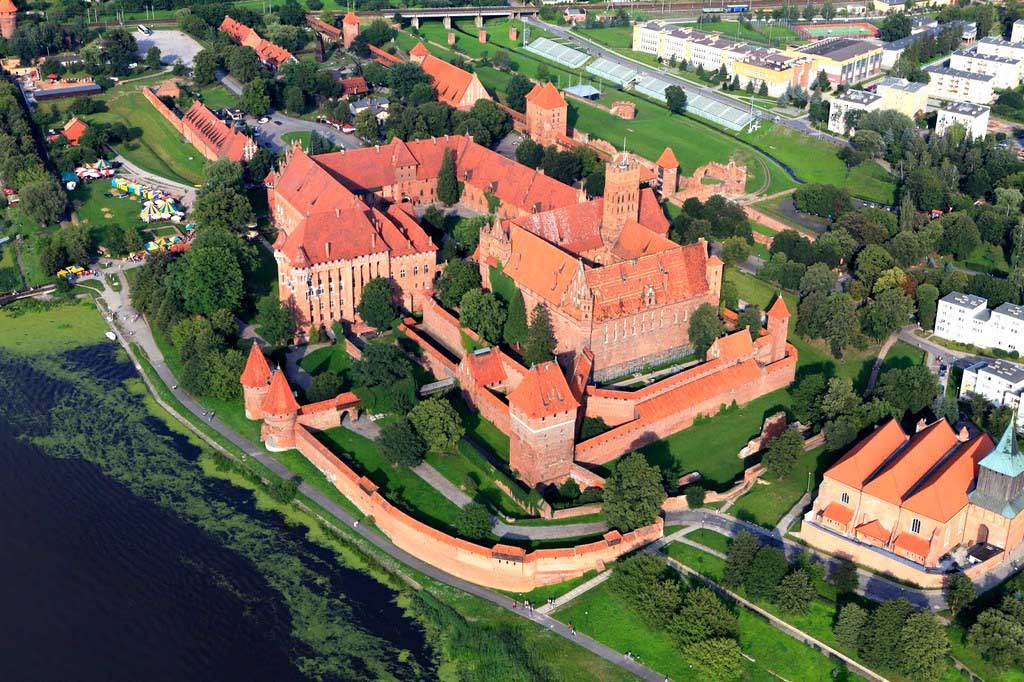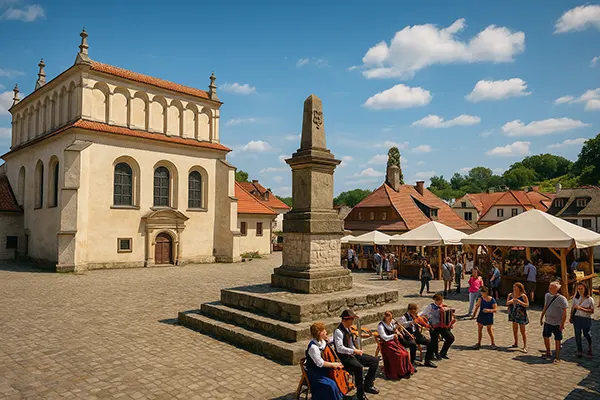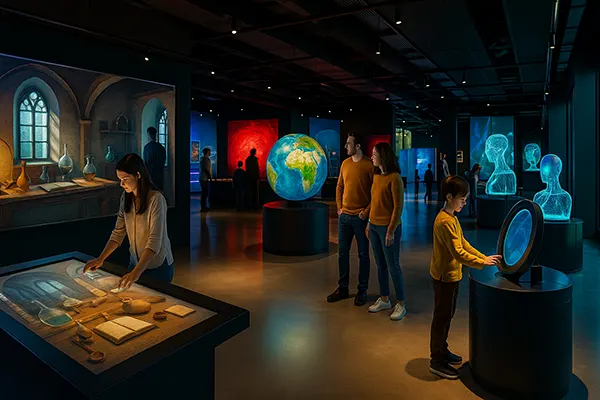
Marienburg Castle
The town of Malbork occupies the northern part of the Polish territory, where the Vistula or Nogat estuary is present. About 80 km separate it from the Kaliningrad Oblast. The town is famous for its marvellous castle complex, called Marienburg. Its construction took place in stages. Over the years the castle was repeatedly enlarged and remodelled according to the requirements of modern times.
Creation of Marienburg
The castle is a creation of residential architecture. It also serves as a defensive structure. Works on its construction began in the late Middle Ages, and to be more precise in the 70s of the 13th century. Originally Marienburg was independent, but over time it was incorporated into the defence system of the Teutonic Order’s Prussian state fortress.
Immediately after its completion the castle became a home and workplace for the commander. He settled there in 1280. In 1309 the role of the castle changed. Since then, it served as the residence of the Grandmasters. In XIV century works on rebuilding the castle started. It was considerably enlarged, thanks to which it began to be divided into separate objects:
- The High Castle – a monastery.
- Middle Castle – the seat of the Grand Master and Grand komtur and the administrative centre of the Order.
- The pre-castle fortification, which included numerous outbuildings.
Over time, Marienburg developed into a military, diplomatic, economic and religious centre. It was also the state capital of the Jerusalem German House of the Order of the Hospice of the Blessed Virgin Mary.

Subsequent changes
Marienburg was actively developing. New objects were added to its territory which made it popular on the European territory. Moreover, it was known as one of the two main bases of the Crusades (in the direction of Lithuania and Zmud). Mass events took place here, the fame of which spread across the entire continent. Knights from all over Europe were eager to take part in the games, feasts and tournaments.
In 1410, the Teutonic army was defeated near Grunwald. The castle remained impregnable. The Poles and Lithuanians were never able to occupy it, which saved the remainder of the Order. It existed as an independent entity until 1454. At that time there was a revolt of the subjects, the reason for which was the crisis in the economy and politics of the state. It was then decided to incorporate the Teutonic Order into the Polish Crown.
The year 1457 was marked by the purchase of the castle from the Teutonic representatives and its transfer to King Casimir Jagiellonczyk. The castle was used as a temporary residence of Polish monarchs for about three centuries. It was also the military base of the Royal Prussia. Part of the fortress was occupied by wardens who had administrative, military, police and judicial authority.
Partition and modernity
The first partition of Poland occurred in 1772. The castle ended up on Prussian territory, as did the northern part of the Polish-Lithuanian Commonwealth. The castle had a barracks and a warehouse. The castle was badly damaged because of the devastation. The restoration took place at the end of the XIXth and beginning of the XXth centuries. Architect Konrad Steinbrecht was in charge of it.
The castle passed to the Poles in 1945. It was badly damaged in the Second World War. However, the castle was rebuilt. Today, restoration work is still going on in some parts of the castle. The Castle Museum in Malbork, which has been operating since 1961, is the owner of the building.
Popular articles
-
 Poland for Film Lovers: Exploring Iconic Movie and Series Locations
Poland for Film Lovers: Exploring Iconic Movie and Series LocationsPoland has increasingly captured the attention of international and local …
-
 Jewish Heritage of Poland: A Journey Through Small Towns
Jewish Heritage of Poland: A Journey Through Small TownsPoland’s Jewish heritage is one of the richest in Europe. …
-
 The Most Fascinating Modern Museums in Poland Opened After 2022
The Most Fascinating Modern Museums in Poland Opened After 2022Poland’s cultural scene has witnessed a fresh wave of innovation, …
